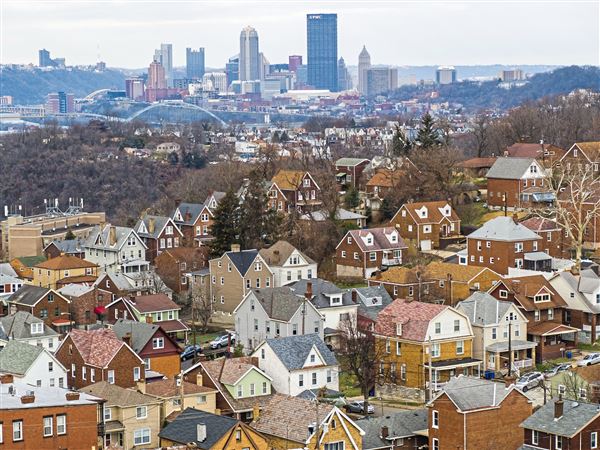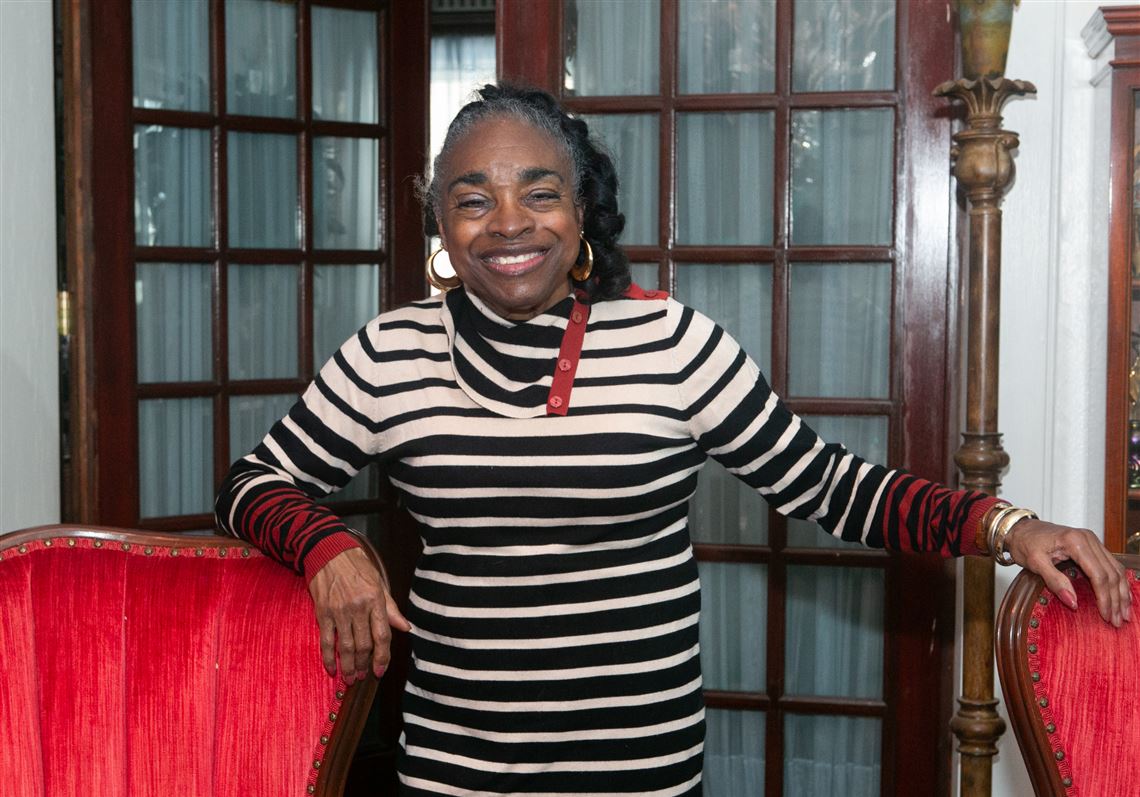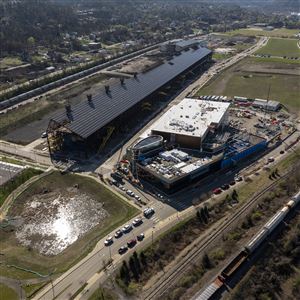Carol Dyas wrapped up a free period at Pittsburgh Public’s Langley High School one day during the 1956-57 school year, clearing away posters she was making with other students working as class leaders.
As the young Black student headed to her next class, she was confronted by the white teacher overseeing the project. “She asked me if I had seen the boxes of chalk. And I said, no, that it was on her desk when I left. She said, ‘Well, it’s a funny thing that when you left now we can’t find it.’”
Ms. Dyas, now 84 and living in Highland Park, had known some teachers were prejudiced against Black students. But the accusation rattled the 16-year-old junior, the only Black student at the time to serve as a classroom leader. Her confusion grew when the chalk was found later in the day on the teacher’s desk. The teacher never apologized.
When Ms. Dyas began her freshman year in 1954, Langley was an integrated school, although the student body was predominantly white. Ms. Dyas was one of only 13 Black students there. Other district schools were segregated based on neighborhood demographics.
Earlier that year, on May 17, the U.S. Supreme Court issued the landmark Brown v. Board of Education ruling, signaling the end of legalized racial segregation in schools nationwide and overturning the “separate but equal” principle set by Plessy v. Ferguson in 1896.
Now, 70 years since the Brown decision, educators and historians are still assessing its impact. Observers say little changed at first: southern states claimed states’ rights and refused to comply, while northern states didn’t think the ruling applied to them.
The decision would later be seen as a catalyst for the civil rights movement, launching “benchmark moments that increased the momentum of the movement,” said Richard Benson, an associate professor at the University of Pittsburgh.
He pointed to the work of Martin Luther King Jr. , who began leading the movement in 1955. Two years later, in September 1957, the Little Rock Nine were the first Black students to enter Central High School in Little Rock, Ark., with the help of Army troops after the teens for months faced angry mobs and doors blocked by the Arkansas National Guard. And in 1960, 6-year-old Ruby Bridges became the first Black student to integrate the all-white William Frantz Elementary School in New Orleans.
“Brown is one of the first concerted efforts as it relates to a mobilization intent to literally dismantle Jim Crow,” Mr. Benson said.
But as key points in the movement played out across the country, things in Pennsylvania remained largely the same.
The state in 1881 had outlawed legal, or de jure, segregation, which is what was addressed in the Brown ruling. De facto segregation, or when segregation occurs because of fact, circumstances or customs — such as through school boundaries — remained legal.
Because of that, the state and school districts, including Pittsburgh Public, didn’t think they had to comply with the Supreme Court ruling.
Seven years after Brown was handed down, things began to shift. The Pennsylvania Human Relations Act was enacted, giving what was then called the Pennsylvania Fair Employment Practices Act increased authority to manage school segregation, state Human Relations Commission member Michael Hardiman told the Post-Gazette this month.
That same year a New York district court found that school directors for the City of New Rochelle School District intentionally created and maintained an elementary school as a racially segregated building, marking “the first time that a northern school district had been busted for de facto segregation,” said Jake Oresick, a 2001 Pittsburgh Public graduate and author of “The Schenley Experiment: A Social History of Pittsburgh’s First Public High School.”
“This was a wakeup call,” he said.
Pittsburgh Public
When Eugene Khorey started teaching at Pittsburgh Public in 1953, he was assigned to Herron Hill Junior High School in the Upper Hill District.
“I learned so much there,” Mr. Khorey said of the building that now holds Milliones 6-12. “I learned what racism was about.”
At the time, the school in the predominantly Black neighborhood had 1,100 Black students and Black teachers, something that “amazed” the young white educator who had “never met Black professionals.” It was the only all-Black secondary school in the 75,000-student school district.
Slowly things began to change.
In the mid-1950s, the city demolished the Lower Hill District to make way for the Civic Arena, forcing thousands of residents out of their homes. Many resettled in housing projects in the Middle Hill neighborhood, Mr. Oresick wrote in his book.
While some students were rerouted to Schenley High School in Oakland, most were assigned to Fifth Avenue, an Uptown school that became majority Black. Westinghouse Academy in Homewood West saw similar shifts. White flight — the migration of white people from areas becoming more racially diverse — persisted, leading to suburban schools becoming predominantly white.
While those numbers are now beginning to shift — white students this year make up 40% of the total student body in suburban schools — housing and school policy over the decades failed to create stable, diverse communities, a February report from UCLA found, meaning students are enrolling in suburban schools in patterns that resemble those of racially and economically isolated urban cores.
By 1962, Pittsburgh Public had begun desegregation efforts through an open enrollment process. Students attending predominantly Black schools could transfer to a building that housed mainly white students. Nine hundred students transferred in the first year.
And by 1965, officials proposed the Great High Schools plan to create five major high schools, each holding up to 5,000 students. The idea, touted as a sweeping desegregation plan, led to years of back-and-forth by the board before it was nixed in 1970.
In the years following the proposal, district officials began to change the makeup of elementary and middle schools. Columbus Middle School — originally an elementary school that reopened as a middle school following a fire — was built in 1967, and had a student body that was one-third Black, a Post-Gazette article from the time said. It was part of a broader blueprint to further integrate five elementary schools on the North Side by redistricting them as feeder schools for Columbus.
Change was also happening on the state level. In 1967, the Pennsylvania Supreme Court, following a case out of Chester County, said the state’s Human Relations Commission could rule on all instances of segregation. The commission began looking at other school districts for segregation-related issues.
In 1968, commissioners officially ordered Pittsburgh Public to desegregate.
By that point, pressure had been building among a largely split Pittsburgh community. Some residents fought against segregation, including a group of parents who in 1970 attempted to block a bus carrying Black students from entering the then predominantly white Carrick High School.
But there was also a push for integration.
The problem — said Harry Clark, 84, a founder and former principal of the Creative and Performing Arts High School — was that the district “sat on it. They didn’t do anything until you got the pressure from the various communities.” And proposed plans up to that point, he said, involved moving Black students into schools outside their home communities.
“They weren’t moving the whites out,” Mr. Clark said.
Also in 1970, the district named three area superintendents. Mr. Khorey was one of them, a Feb. 25, 1970 Pittsburgh Press article says.
The appointment put him in a key position. Over the next decade, Mr. Khorey led the 1973 opening of Martin Luther King Elementary School, which combined into one all of the elementary schools on the North Side. He also helped open Greenway Middle School, which moved North Side students to the West End.
And in 1976 he led the opening of Beechview’s Brashear High School, which combined Fifth Avenue, Gladstone in Hazelwood and South Hills in Mount Washington. The school was expected to fail because it brought together 1,200 white and 1,200 Black students, forcing mainly Black teens to cross bridges and go through tunnels to get to school.
While there were struggles, Brashear defied the odds.
“There was no recipe,” Mr. Khorey said last year. “Nobody had a book on how to integrate a school, and I will bet my life that no school that opened on an integrated basis faced the challenges that the 2,400 kids that attended Brashear faced.”
Magnet schools
Still, Pittsburgh Public continued to scuffle with the Human Relations Commission.
By 1982, “the PHRC lost patience” and asked the courts to make two forced mergers within city schools, Mr. Oresick said, including the all-Black Schenley with the predominately white South High School, and Allderdice in Squirrel Hill with Westinghouse in Homewood. The courts rejected the plan, a decision that the district attributed to the 1979 creation of magnet schools that students could attend through a lottery.
While the magnets became popular — with many officials saying the schools had a diverse student body and featured teachers of color — Pittsburgh Public continues to struggle with segregation issues today.
Allderdice, for example, has a student body that is almost half white while Westinghouse remains almost 90% Black. And according to A+ Schools, during the 2020-21 school year nearly 22% of Black students attended city public and charter schools with student populations that were 90% Black or brown.
Those numbers, a study by the Urban Institute, a think tank in Washington, D.C., found, are driven by school choice, residential housing sorting and school policies that perpetuate racial and ethnic segregation through attendance boundary lines.
Ms. Dyas, who graduated from Langley High School in 1958 and spent her teaching career at PPS, said desegregation efforts in the district were often plagued with “problems that had to be worked out.” Those ranged from parents’ willingness to send their kids to integrated schools to teachers who had to “reconcile some of their own beliefs,” she said.
“I was able to see quite a few changes,” Ms. Dyas said. “They were slow in coming, I thought, but they were coming."
First Published: May 16, 2024, 9:30 a.m.
Updated: May 17, 2024, 2:00 a.m.















